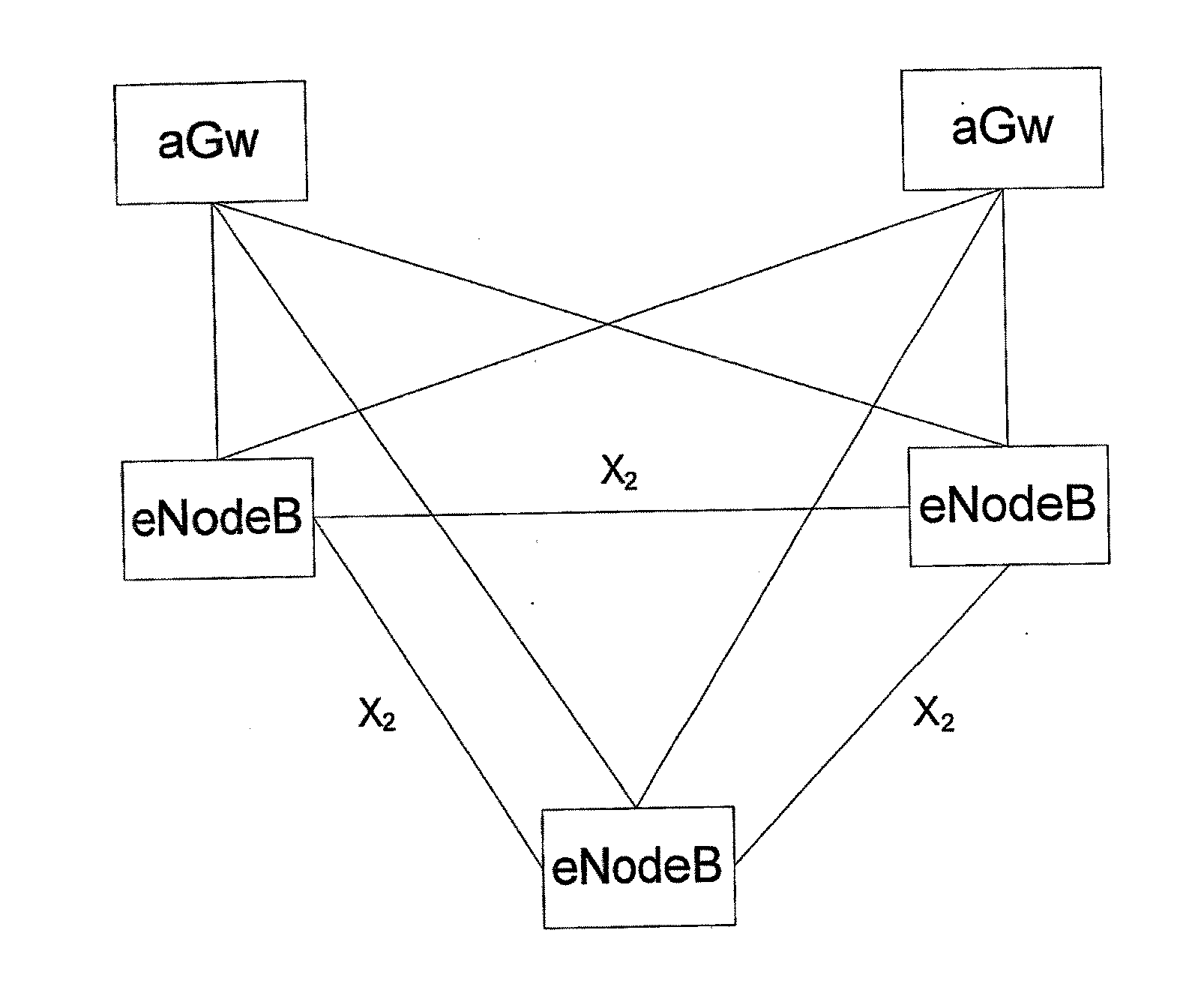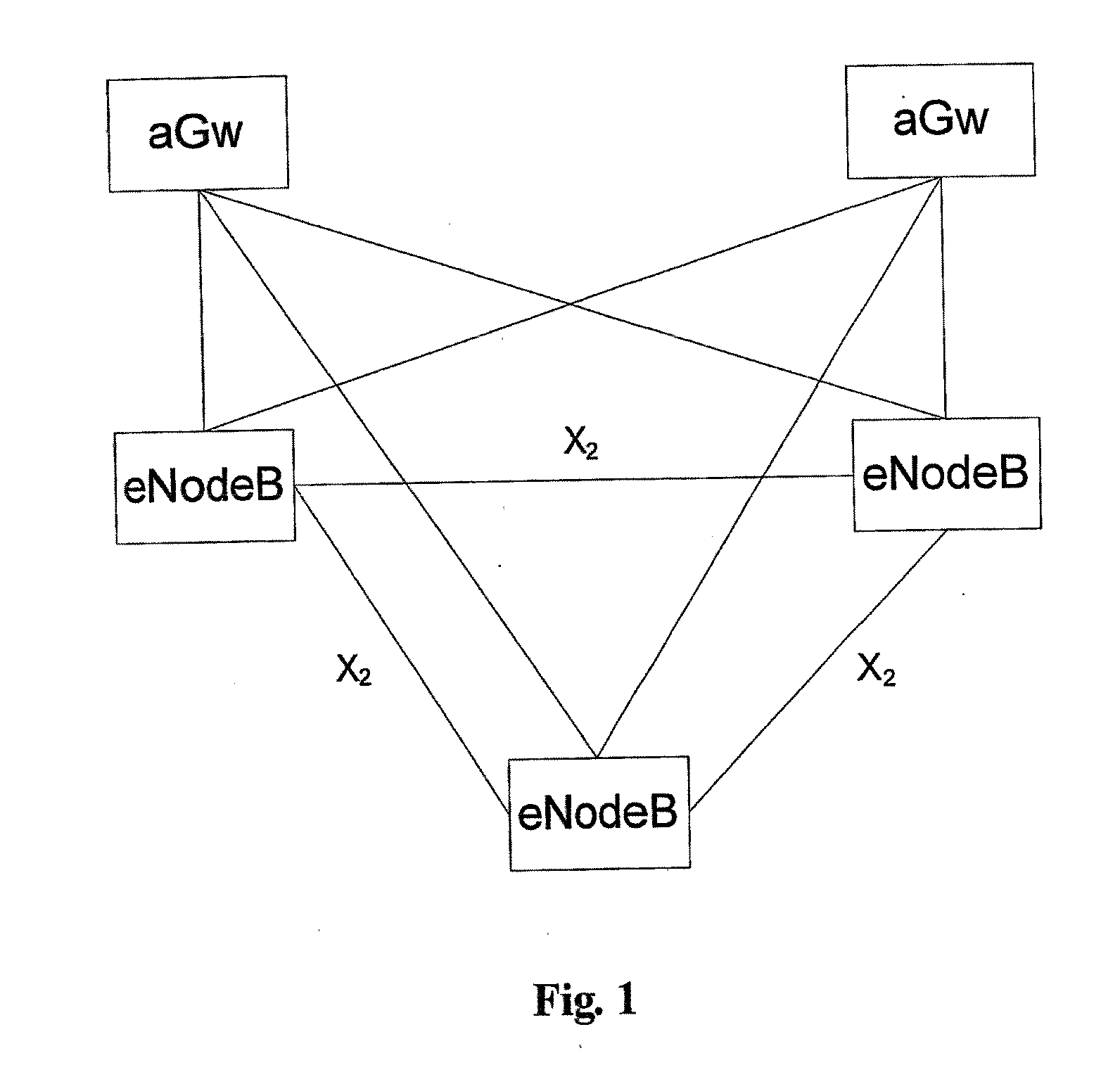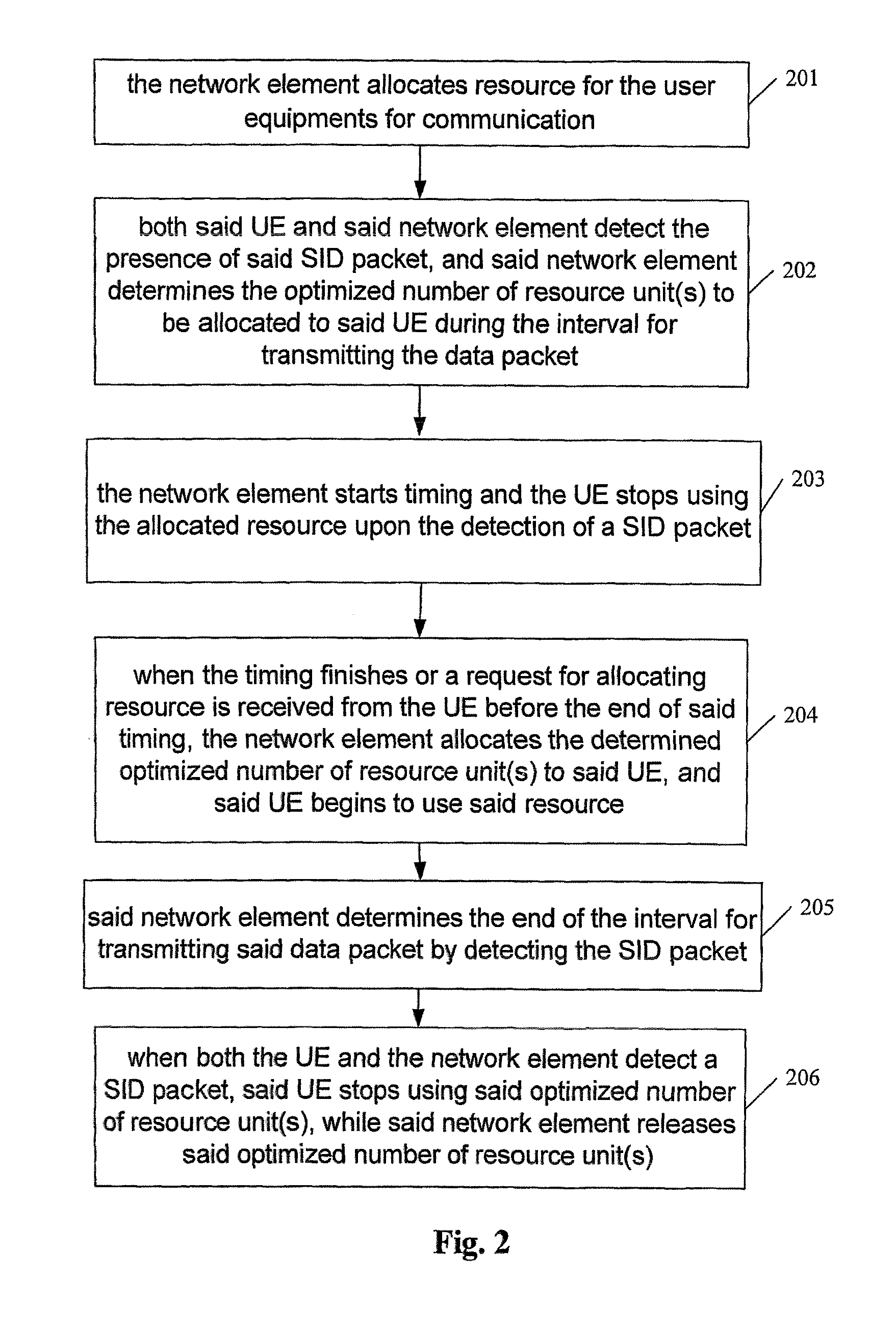Method for scheduling resource, network element and user equipment
a resource and network element technology, applied in the field of communication, can solve the problems of low resource utilization of all scheduling methods, low flexibility of scheduling methods, and large signaling overhead
- Summary
- Abstract
- Description
- Claims
- Application Information
AI Technical Summary
Benefits of technology
Problems solved by technology
Method used
Image
Examples
Embodiment Construction
[0027]The present invention proposes a method for semi-persistently scheduling resource for data packet using retransmission statistics during the talk-spurt periods in a packet network. With reference to FIG. 2, the method for scheduling resource according to an embodiment of the present invention is described. This method may be applied to the system shown in FIG. 1. The description of the above system will not be repeated herein.
[0028]As shown in FIG. 2, firstly, in step 201, the network element allocates resource for the UE for communication. Herein, the network element may be for example the eNodeB shown in FIG. 1. In the present embodiment, any existing and future solution may be adopted for allocating resource, for example, but not exclusively eNodeB allocating resource to UEs by means of the above-mentioned persistent scheduling method.
[0029]In step 202, both the user equipment and the eNodeB detect if a SID packet is present, and the eNodeB determines the optimized number o...
PUM
 Login to View More
Login to View More Abstract
Description
Claims
Application Information
 Login to View More
Login to View More - R&D
- Intellectual Property
- Life Sciences
- Materials
- Tech Scout
- Unparalleled Data Quality
- Higher Quality Content
- 60% Fewer Hallucinations
Browse by: Latest US Patents, China's latest patents, Technical Efficacy Thesaurus, Application Domain, Technology Topic, Popular Technical Reports.
© 2025 PatSnap. All rights reserved.Legal|Privacy policy|Modern Slavery Act Transparency Statement|Sitemap|About US| Contact US: help@patsnap.com



